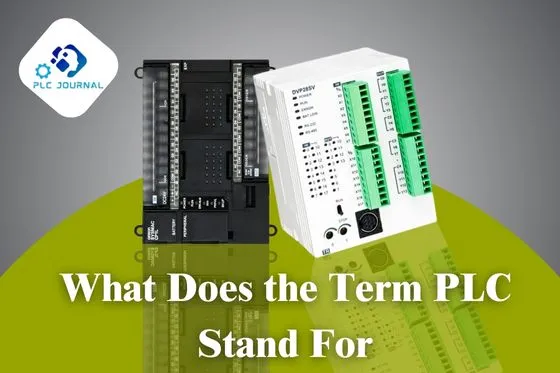Introduction to what does the term PLC stand for
In the realm of industrial automation, what does the term PLC stand for. PLCs are specialized digital computers used to control machinery and processes in manufacturing environments, making them integral to the automation of various tasks across industries. As a cornerstone of modern industrial automation, PLCs play a vital role in enhancing efficiency, productivity, and safety in manufacturing operations.
what does the term PLC stand for | Evolution and History of PLC
The evolution of what the term PLC stands for can be traced back to the late 1960s when they were introduced as a more flexible and efficient alternative to traditional relay-based control systems. Initially developed to replace complex relay systems in the automotive industry, PLCs quickly gained popularity across a wide range of industrial sectors due to their versatility and programmability.
The earliest what does the term PLC stand for were primarily designed to perform simple logic functions, such as turning machines on and off or sequencing operations. However, with advancements in technology, modern PLCs have evolved into highly sophisticated devices capable of executing complex control algorithms, handling large amounts of data, and interfacing with various sensors, actuators, and other automation equipment.
what does the term PLC stand for | Components and Architecture of PLC
A typical PLC system consists of several key components, including:
Central Processing Unit (CPU): The brain of the PLC, responsible for executing control programs, handling inputs and outputs, and communicating with external devices.
Input Modules: These modules interface with sensors and other input devices to receive signals from the controlled process or machine.
Output Modules: These modules interface with actuators and other output devices to control the operation of machinery and equipment.
Memory: PLCs contain various types of memory, including program memory (to store control logic), data memory (to store variables and temporary data), and system memory (for internal operations).
Communication Interfaces: PLCs often feature communication ports or interfaces for connecting to other devices, such as HMI (Human-Machine Interface) systems, SCADA (Supervisory Control and Data Acquisition) systems, or networked control systems.
Programming Software: Specialized software is used to create, edit, download, and debug control programs for PLCs. Programming languages commonly used in PLC programming include ladder logic, function block diagrams, and structured text.
Applications and Industries
What does the term PLC stand for to find applications across a wide range of industries, including manufacturing, automotive, aerospace, pharmaceuticals, food and beverage, oil and gas, and utilities. Some common applications of PLCs include:
Automated Assembly Lines: PLCs control the sequencing and coordination of machines and robots in automated assembly processes, ensuring efficient production and quality control.
Process Control: PLCs regulate parameters such as temperature, pressure, flow, and level in industrial processes such as chemical manufacturing, water treatment, and power generation.
Material Handling: PLCs control conveyor systems, robotic arms, and other material handling equipment in warehouses, distribution centers, and manufacturing facilities.
Environmental Control: PLCs manage HVAC (Heating, Ventilation, and Air Conditioning) systems, lighting, and other building automation functions to optimize energy efficiency and comfort in commercial and residential buildings.
Advantages of PLCs
The widespread adoption of PLCs is attributed to several key advantages they offer over traditional relay-based control systems and other forms of automation:
Flexibility: PLCs can be easily reprogrammed and reconfigured to adapt to changing production requirements or process conditions, offering greater flexibility compared to fixed-function control systems.
Reliability: PLCs are designed for robust performance in industrial environments, with built-in fault detection and error handling mechanisms to ensure reliable operation.
Scalability: PLC systems can be scaled up or down to accommodate changes in the size or complexity of manufacturing operations, making them suitable for both small-scale and large-scale applications.
Integration: PLCs can communicate with other automation systems, enterprise software, and cloud-based services, enabling seamless integration with higher-level control systems and business processes.
Diagnostics and Maintenance: PLCs provide diagnostic information and troubleshooting tools to help operators identify and rectify faults quickly, minimizing downtime and maintenance costs.
Challenges and Future Trends | what does the term PLC stand for
While the term PLC stands for Programmable Logic Controller and has revolutionized industrial automation, it is not without challenges. Some common challenges include cybersecurity risks, compatibility issues with legacy systems, and the need for skilled personnel to design, program, and maintain PLC systems.
Looking ahead, several trends are shaping the future of PLC technology, including the adoption of Industry 4.0 principles, the integration of AI (Artificial Intelligence) and machine learning algorithms, the proliferation of IIoT (Industrial Internet of Things) devices, and the development of more intuitive programming tools and interfaces.
5 Key Facts About what does the term PLC stand for
Programmable Logic Controller (PLC) is a fundamental component in industrial automation, serving as the brain behind the operation and control of machinery and processes. Here are five key facts about PLCs:
Origin and Evolution:
Programmable Logic Controllers originated in the late 1960s as a replacement for complex relay-based control systems used in manufacturing. The first PLC, known as the Modicon 084, was developed by Bedford Associates, later acquired by Schneider Electric.
Since then, PLC technology has evolved significantly, transitioning from basic relay logic to sophisticated microprocessor-based systems capable of handling complex automation tasks. Today, PLCs are indispensable in various industries, including manufacturing, automotive, energy, and pharmaceuticals.
Functionality and Operation:
PLCs function as industrial digital computers designed to monitor inputs and control outputs based on a custom program. They receive input signals from sensors and other devices, process this information using a stored program, and then execute predefined logic to control actuators, motors, valves, and other output devices.
The programming language used for PLCs varies but often includes ladder logic, structured text, function block diagrams, and sequential function charts, providing flexibility in designing control algorithms suited to specific applications.
Applications:
PLCs find applications in a wide range of industrial processes, including manufacturing automation, process control, motion control, and data acquisition. In manufacturing, PLCs control machinery such as conveyor belts, robotic arms, and assembly lines, ensuring precise operation and coordination. They also play a vital role in process industries like oil refining and chemical processing, overseeing tasks such as temperature regulation, pressure control, and material handling.
Additionally, PLCs are integral to building automation systems, managing HVAC (heating, ventilation, and air conditioning) systems, lighting, and security.
Advantages:
The adoption of PLCs offers several advantages over traditional relay-based control systems and other automation technologies. PLCs provide flexibility in programming and reprogramming, allowing quick adjustments to accommodate changes in production requirements or process parameters.
They offer reliability and robustness in harsh industrial environments, with many models built to withstand extreme temperatures, humidity, and vibrations. PLCs also facilitate remote monitoring and diagnostics, enabling proactive maintenance and troubleshooting to minimize downtime and optimize productivity.
Integration and Connectivity:
Modern PLCs feature enhanced connectivity capabilities, facilitating integration with other automation devices and systems. They support various communication protocols such as Ethernet/IP, Profibus, Modbus, and DeviceNet, enabling seamless data exchange between PLCs, human-machine interfaces (HMIs), supervisory control and data acquisition (SCADA) systems, and enterprise resource planning (ERP) software.
This connectivity fosters interoperability and data sharing, enhancing overall system efficiency, and enabling real-time monitoring and control across distributed networks.
The term PLC stands for Programmable Logic Controller. It refers to a specialized digital computer used in industrial automation and control systems. Originally developed to replace hard-wired relay systems, PLCs have evolved into highly flexible devices capable of controlling a wide range of processes in manufacturing, assembly lines, and various other industrial applications.
A PLC, on the other hand, is a solid-state device with a microprocessor at its core. It is designed to perform control functions based on input received from sensors and other devices, executing logical operations to generate output signals that control machinery or processes.
The flexibility of PLCs lies in their programmability; users can modify the control logic and behavior of the PLC by writing and uploading new programs, allowing for rapid reconfiguration and adaptation to changing production needs.
The basic components of a PLC system include
CPU (Central Processing Unit): The CPU is the brain of the PLC, responsible for executing the control program and coordinating communication between various input and output devices.
Input Modules: These modules receive signals from sensors, switches, and other input devices, converting them into digital signals that the PLC can process.
Output Modules: Output modules generate signals that control actuators, motors, valves, and other devices, based on the instructions provided by the control program.
Memory: PLCs contain both volatile and non-volatile memory for storing the control program, data tables, and other information required for operation.
Communication Interfaces: Many modern PLCs feature communication ports for connecting to other devices, such as supervisory control systems, human-machine interfaces (HMIs), and networks for remote monitoring and control.
PLCs are programmed using specialized software, often referred to as ladder logic programming software. Ladder logic is a graphical programming language that resembles electrical relay diagrams, making it intuitive for engineers and technicians familiar with traditional control systems.
In addition to ladder logic, PLC programming software may support other programming languages such as Function Block Diagram (FBD), Structured Text (ST), and Sequential Function Chart (SFC).
The widespread adoption of PLCs has revolutionized industrial automation, enabling manufacturers to improve productivity, quality, and flexibility while reducing downtime and maintenance costs. Today, PLCs are integral to a wide range of industries, including automotive manufacturing, food and beverage processing, pharmaceuticals, oil and gas, and more.
As technology continues to advance, PLCs are evolving to incorporate features such as integrated motion control, advanced diagnostics, and connectivity to the Internet of Things (IoT), further enhancing their capabilities and versatility in modern industrial environments.
Conclusion | what does the term PLC stand for
In conclusion, PLCs are indispensable tools in modern industrial automation, providing the foundation for efficient, flexible, and reliable control of manufacturing processes and machinery. With ongoing advancements in technology and the emergence of new applications and industries, the role of PLCs is poised to expand further, driving innovation and productivity in the global manufacturing sector.
Understanding the principles, components, and applications of PLCs is essential for engineers, technicians, and professionals involved in the field of industrial automation.
The Top 7 FAQs About what does the term PLC stands for Answered
PLC stands for Programmable Logic Controller. It’s a specialized industrial computer used for automating processes such as manufacturing, assembly lines, and robotic devices.
PLCs are programmed to monitor inputs and control outputs based on a custom logic program. They receive signals from sensors and other input devices, process the data according to the program, and then activate outputs such as motors, valves, and other actuators.
The main components of a PLC include:
Central Processing Unit (CPU): Performs the execution of the control program.
Input Modules: Receive signals from sensors and other input devices.
Output Modules: Control actuators such as motors, valves, and relays.
Programming Device: Used to write and edit the control program.
Power Supply: Provides electrical power to the PLC.
Some advantages of using PLCs include:
Flexibility: Programs can be easily modified to accommodate changes in the process.
Reliability: PLCs are designed for industrial environments and have robust hardware.
Diagnostics: PLCs provide detailed information about the state of inputs and outputs, aiding in troubleshooting.
Cost-effectiveness: PLCs can replace complex relay-based control systems, reducing wiring and maintenance costs.
PLCs are used in a wide range of industries, including manufacturing, automotive, pharmaceuticals, food and beverage, utilities, and more. Anywhere there’s a need for automated control of processes, PLCs can be found.
Programmable Logic Controllers (PLCs) are commonly programmed utilizing specialized software offered by the manufacturer. The programming language commonly used is ladder logic, which resembles electrical relay logic diagrams. Other programming languages such as function block diagrams (FBD) and structured text (ST) may also be supported depending on the PLC model.
Some of the leading PLC manufacturers include Siemens, Allen-Bradley (Rockwell Automation), Mitsubishi Electric, Omron, Schneider Electric, and ABB. These companies offer a wide range of PLC models with varying capabilities to suit different industrial applications.



